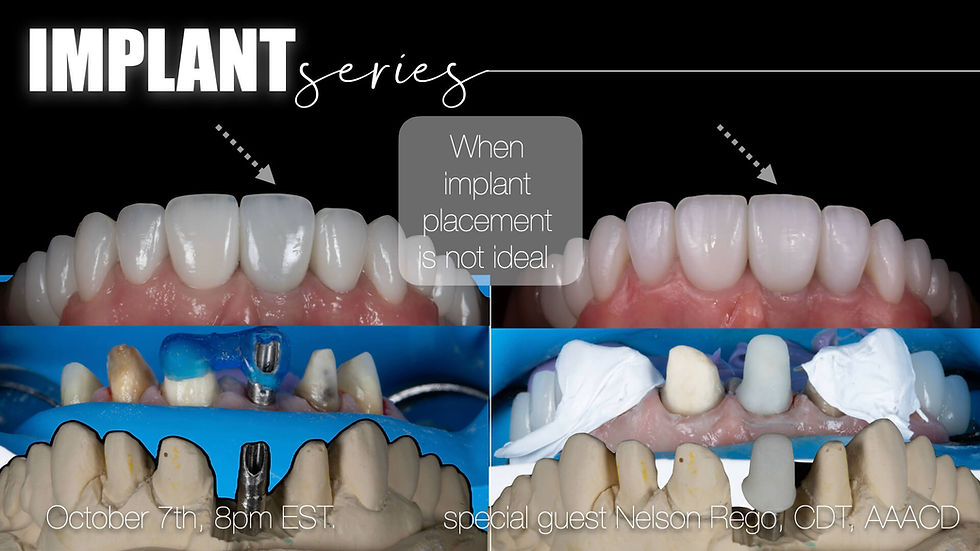Making the Most of Canine Substitution Cases
- Dr. Amanda Seay

- Apr 29
- 2 min read
Updated: May 5
One of the most challenging restorative scenarios arises when patients complete orthodontic treatment—often without any prior smile design planning—and arrive expecting a cosmetic finish that’s both seamless and natural. Canine substitution cases, in particular, can reveal significant esthetic and functional hurdles once the braces come off.
In this clinical tip, Dr. Seay shares how to approach these tricky situations when the orthodontic setup isn’t ideal. She walks through key considerations like evaluating axial inclination, identifying improper gingival zeniths, and assessing bone architecture—especially when you're handed a “finished” case that still needs foundational esthetic work.
A major takeaway is that surgical crown lengthening isn’t just about exposing more tooth structure—it’s about reshaping the bone to support harmonious tissue contours and ideal emergence profiles. Dr. Seay discusses how to manage tissue with precision and communicate with the lab in a way that maximizes results, even when working with minimal-prep veneers.
Here are four additional pearls from the tip:
Evaluate Bone Thickness Before Crown Lengthening: When thick or bulbous bone is present, especially in the premolar region, flap surgery may be necessary to create space and define a clean emergence profile.
Avoid Shifting the Zenith Too Mesially: Elevating tissue on a misaligned tooth can throw off visual balance. It's important to anticipate how surgical or restorative changes might disrupt the overall gingival architecture.
Use Shrink Wrap Provisionals for Minimal Prep Veneers: For conservative veneer cases, spot etch and shrink wrap provisionals offer excellent esthetics without over-preparing teeth—providing both strength and flexibility.
Sequence Matters During Veneer Delivery: Cementing restorations in a thoughtful order ensures optimal symmetry and contact point accuracy.



